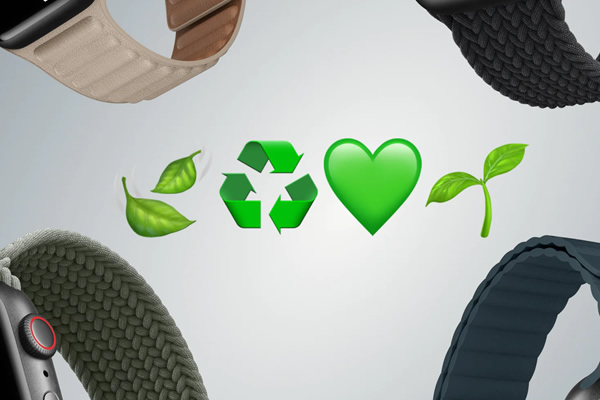
The world of fashion is undergoing a profound transformation. No longer confined to aesthetics alone, it’s now a realm where ethics and sustainability converge. This article delves into the fascinating domain of eco-friendly wearables, a growing movement that marries style with sustainability. From the environmental impact of fashion to the role of technology in this shift, we’ll explore every facet of this transformative trend.
The fashion industry is experiencing a seismic shift towards sustainability, catalyzed by the ever-growing consciousness of consumers. As the desire for eco-conscious choices continues to gain momentum, the intersection of fashion and technology has given birth to eco-friendly wearables. These are more than just garments; they represent a commitment to a greener, more responsible world.
The Environmental Impact of Fashion
Fast fashion, once the emblem of convenience, is increasingly recognized for its detrimental environmental consequences. The breakneck pace of production and disposal leads to excessive waste and overconsumption. On the contrary, sustainable fashion seeks to address the colossal carbon footprint of the industry. From manufacturing to transportation, it encompasses a holistic approach to reducing environmental harm.
The Evolution of Wearable Technology
Wearable technology has come a long way. It’s evolved from serving solely functional purposes to becoming a means of personal expression. Today, it’s not unusual to find tech-infused clothing that’s as much about style as it is about utility. This merging of fashion and technology is a significant driver in the rise of eco-friendly wearables.
Characteristics of Eco-Friendly Wearables

At the heart of these sustainable choices lie three fundamental characteristics:
Sustainable Materials: These wearables are crafted from environmentally friendly materials, such as organic cotton, hemp, and recycled plastics. The emphasis is on reducing the use of non-renewable resources.
Minimal Resource Consumption: Eco-friendly wearables prioritize efficiency in resource use during production, ensuring that waste and energy consumption are minimized.
Longevity and Durability: These wearables are designed to withstand the test of time, promoting a culture of reusability and discouraging disposable fashion.
Benefits of Eco-Friendly Wearables
Choosing eco-friendly wearables offers a plethora of benefits:
Reduced Environmental Footprint: By opting for sustainable materials and production processes, you’re directly contributing to a reduction in the fashion industry’s carbon footprint.
Health Benefits for Consumers: Organic materials are not only kind to the environment but also to your skin. They are free from harmful chemicals and pesticides.
Contribution to a Sustainable Lifestyle: Incorporating eco-friendly wearables into your wardrobe is a step towards embracing a more sustainable way of living, one garment at a time.
Sustainable Fashion Brands and Their Initiatives
A multitude of fashion brands have embraced sustainability as a core value. They’re not just producing eco-friendly wearables; they’re revolutionizing the industry. Brands like Patagonia and Eileen Fisher are leading the charge, employing innovative sustainable practices and demonstrating transparency in their supply chains.
Smart Fabrics and Sustainable Materials
To create eco-friendly wearables, designers are turning to materials that are gentle on the environment. This includes fabrics made from recycled or upcycled materials, organic textiles, and low-impact dyes and finishes. Smart fabrics are also making their way into sustainable fashion, offering functionality beyond traditional attire.
Eco-Friendly Wearable Categories
Eco-friendly wearables span various categories, including:
Sustainable Footwear: Shoes that are comfortable for your feet and gentle on the planet, often made from recycled materials or sustainable leather alternatives.
Eco-Friendly Clothing: Sustainable clothing options, ranging from casual wear to high fashion, crafted from eco-conscious materials.
Accessories and Jewelry: Eco-friendly accessories and jewelry made from recycled or ethically sourced materials.
Wearable Technology in Sustainable Fashion
Innovations in technology are complementing the sustainable fashion movement. Eco-friendly smartwatches, solar-powered accessories, and clothing embedded with sensors are making a mark. These not only offer convenience but also align with the eco-conscious values of the conscious consumer.
Recycling and Upcycling in Fashion
A critical aspect of sustainable fashion is the concept of recycling and upcycling. The second-hand market has gained new life, reducing the demand for new production. DIY fashion and customization offer consumers a chance to breathe new life into old garments, promoting a circular fashion economy.
How to Shop for Eco-Friendly Wearables
To make sustainable choices, consumers should:
- Research Sustainable Brands: Seek out brands with a proven commitment to sustainability.
- Read Labels and Certifications: Look for certifications like Fair Trade, organic, and others.
- Evaluate Material and Production Methods: Consider the materials used, energy efficiency, and ethical practices involved in production.
Maintenance and Care for Eco-Friendly Wearables
Extending the life of your eco-friendly wearables is key. This includes:
- Cleaning and Washing Guidelines: Proper care to maintain the fabric’s integrity.
- Repair and Restoration Options: Seek professional repairs to mend wear and tear.
- Extending the Lifespan: Simple practices like proper storage can prolong the life of your eco-friendly wearables.
The Economic Aspect of Sustainable Fashion
Sustainable fashion may have a reputation for being pricey, but it’s a long-term investment. While the initial cost may be higher, the durability and ethical aspects outweigh the price tag. The growing market for sustainable fashion is evidence of its economic viability.
Social and Ethical Implications
Sustainable fashion isn’t just about the environment; it’s also about people. Fair labor practices, empowering local communities, and advocating for ethical consumption are core principles in the sustainable fashion movement.
Case Studies: Successful Eco-Friendly Wearable Initiatives

Several brands have set exemplary standards in the sustainable fashion realm:
- Patagonia’s Worn Wear Program: Encouraging the reuse and repair of their products.
- Adidas’ Ocean Plastic Sneakers: Shoes made from recycled ocean plastics, address a critical environmental issue.
- Levi’s Water<Less Jeans: Reducing water consumption in jeans production, making strides in sustainable denim.
The Role of Innovation in Eco-Friendly Wearables
Innovations continue to drive eco-friendly wearables forward. Technological advancements, from 3D printing in fashion to biofabrication, are shaping the future of sustainable fashion. Collaboration between tech and fashion industries is essential to propel the movement forward.
The Influence of Celebrities and Influencers
Celebrities and social media influencers are using their platforms to promote sustainable fashion. From Emma Watson’s eco-friendly red carpet choices to influencers championing eco-conscious brands, they’re steering fashion trends towards sustainability.
Tips for Sustainable Fashion Advocacy
Being a sustainable fashion advocate can be as simple as:
- Spreading Awareness: Sharing information on sustainable brands and practices.
- Supporting Sustainable Fashion Events: Attending or promoting eco-conscious fashion shows and events.
- Encouraging Policy Changes: Advocating for policies that favor sustainability in the fashion industry.
Challenges and Criticisms
As with any transformative movement, eco-friendly wearables face challenges:
- Affordability and Accessibility: Sustainable fashion can be costlier, making it less accessible to all.
- Greenwashing in the Fashion Industry: Some brands may claim sustainability without substantiating it.
- Consumer Resistance: Changing consumer behavior is not always easy, and resistance to sustainable choices persists.
Conclusion
The power to drive change rests in the choices we make as consumers. Eco-friendly wearables are a testament to the evolving landscape of fashion, where aesthetics meet ethics.


